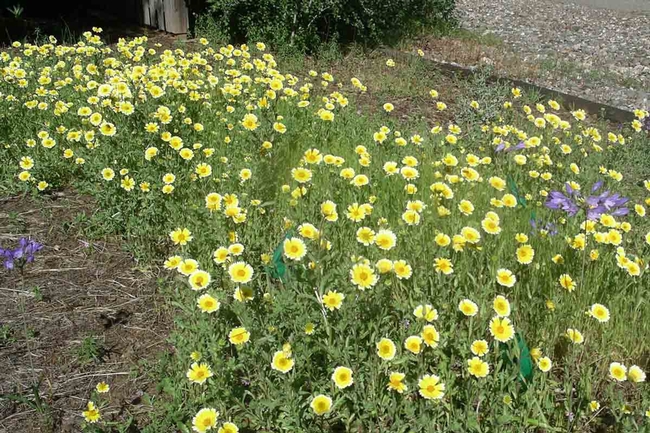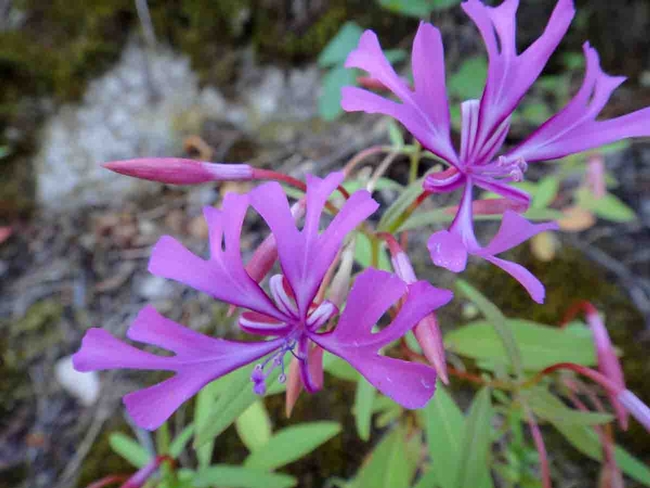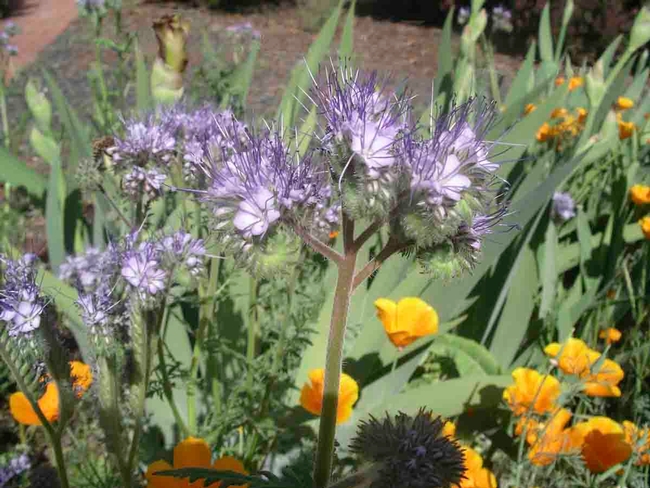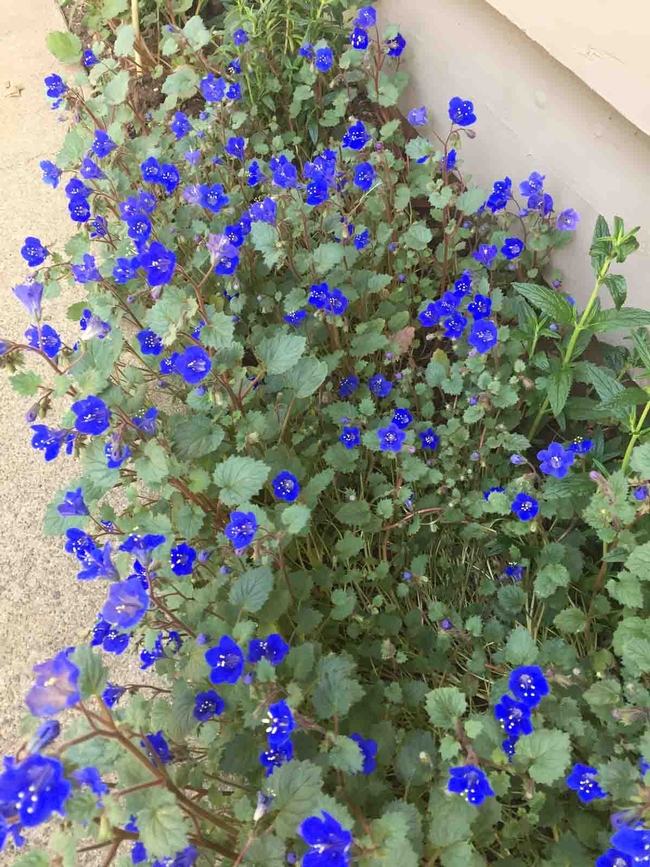Among the joys of a California spring are swaths of annual wildflowers blooming around the state. Here in Butte County good places to view this wildflower show include Upper Bidwell Park, Table Mountain, and Feather Falls Trail. Annual wildflowers have a life cycle that lasts just one year. Seeds germinate in the fall and winter rains (or with irrigation), roots and lower leaves grow through the winter, and plants begin to bloom in the early spring, with different species blooming into early summer. Seeds are formed and mature from late spring through summer and fall, then the mother plant dies. Seeds are spread by the mother plant, the wind, or animals, in time for the whole process to start over with the next rainy season.
Tidytips (Layia platyglossa) and Ithuriel's Spear. Cindy Weiner
Red Ribbons (Clarkia concinna). Lorna Kunkle
Lacy Phacelia (Phacelia tanacetifolia) and California poppies (Eschscholzia californica). Cindy Weiner
If you have only a small number of seeds, you may want to cluster a few of them together in selected spots. Use a narrow strip of paper towel or toilet paper laid on the ground and misted with water. Spread a few seeds evenly on the paper before covering them lightly with soil and watering gently.
Weed seeds still remaining in the ground will germinate and grow along with your wildflowers and can overrun them if left unchecked. Stay vigilant with your weeding! Be sure you are able to tell the difference between weed seedlings and native wildflowers when you weed. Photos of juvenile wildflower leaves can be very helpful at this point. Some people sow a few seeds in labeled pots to use as a reference when they sprout. Remember that seeds growing in pots will need to be watered more often than those planted in the ground.
Farewell-to-Spring (Clarkia amoena). Deb Halfpenny
Although very large patches of wildflowers are beautiful when in bloom, they're a little less appealing when the plants dry up. Large patches are also hard to keep weed-free, although it can become easier with time. Many people add some herbaceous perennials or small shrubs to the patch to provide interest when the wildflowers are spent. It's much easier to maintain smaller patches or to plant just a few seeds in small spaces in a perennial bed or in between shrubs.
Harvests & Habitats Nursery in Chico sometimes has seeds from a few native wildflowers for sale. Floral Native Nursery, also in Chico, sells a native wildflower mix, a pollinator mix, and seeds from about a dozen different kinds of native wildflowers. Online sources of native seeds include Larner Seeds, Theodore Payne Foundation, and Seedhunt.
Desert Bluebells (Phacelia campanularia). Deb Halfpenny
UC Master Gardeners of Butte County are part of the University of California Cooperative Extension (UCCE) system. To learn more about us and our upcoming events, and for help with gardening in our area, visit our website. If you have a gardening question or problem, email the Hotline at mgbutte@ucanr.edu or leave a phone message on our Hotline at (530) 538-7201. To speak to a Master Gardener about a gardening issue, or to drop by the MG office during Hotline hours, see the most current information on our Ask Us section of our website.




